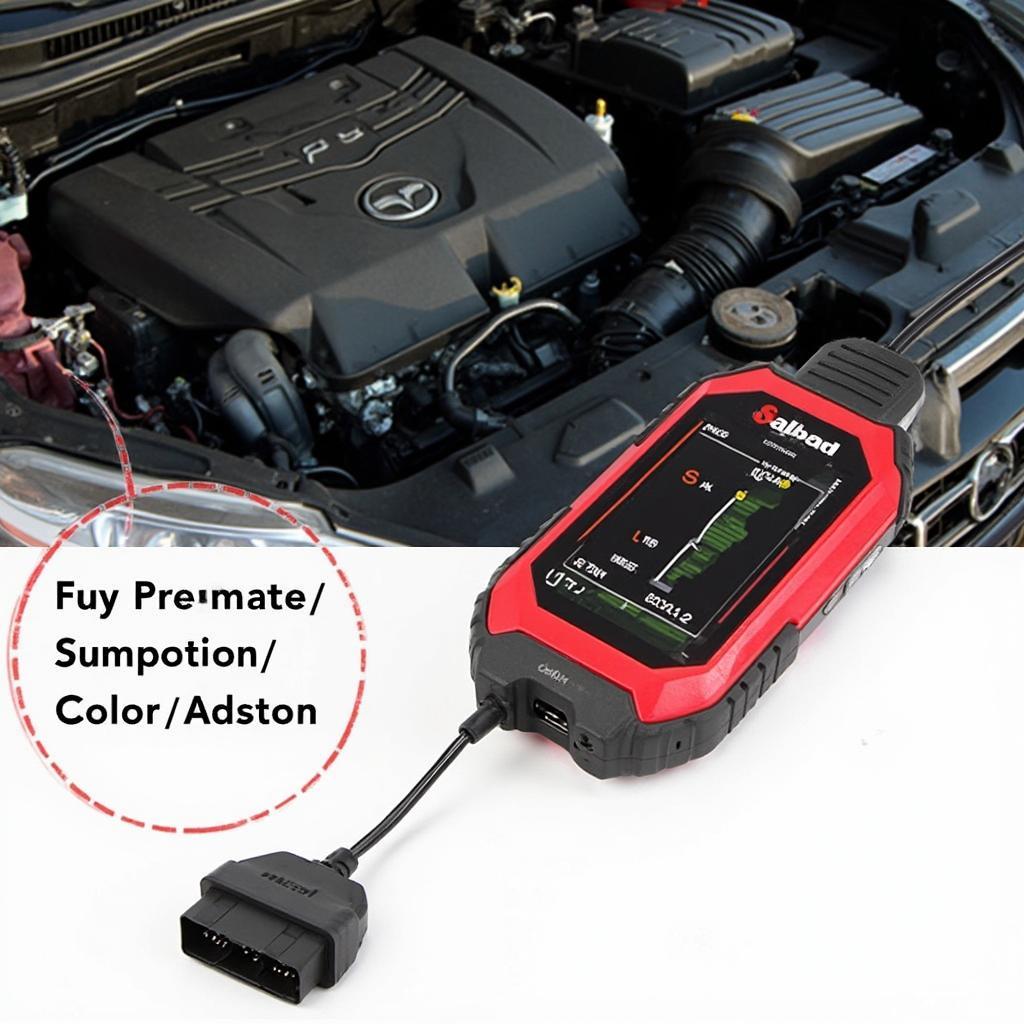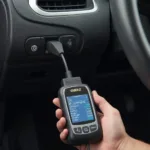OBD2 scanners are invaluable tools for diagnosing car problems, but can OBD2 scanners read fuel pressure? The answer isn’t always straightforward. While some OBD2 scanners can access fuel pressure data, many basic models can’t. This article delves into the intricacies of OBD2 scanners and fuel pressure readings, providing a comprehensive understanding of what’s possible and how to access this crucial information.
Understanding OBD2 Scanners and Fuel Pressure
OBD2 scanners communicate with a vehicle’s onboard computer, retrieving diagnostic trouble codes (DTCs) and sensor data. Fuel pressure, a vital parameter for engine performance, is sometimes accessible through these scanners. However, whether or not your specific OBD2 scanner can read fuel pressure depends on several factors, including the vehicle’s make, model, year, and the capabilities of the scanner itself. Many drivers wonder if their scanner can provide this data, and this article aims to clarify the situation.
 OBD2 Scanner Reading Fuel Pressure
OBD2 Scanner Reading Fuel Pressure
Factors Influencing Fuel Pressure Readings via OBD2
Several factors influence the ability of an OBD2 scanner to read fuel pressure:
- Vehicle Compatibility: Not all vehicles provide fuel pressure data through the OBD2 port. Older vehicles, especially those manufactured before OBD2 became standard, are less likely to offer this information. Even newer cars might not expose fuel pressure data depending on the manufacturer’s specific implementation.
- Scanner Capabilities: Basic OBD2 scanners typically read and clear DTCs, providing limited access to live data. Advanced scanners, often professional-grade tools, can access a wider range of sensor data, including fuel pressure, if the vehicle supports it.
- Presence of a Fuel Pressure Sensor: The vehicle must have a dedicated fuel pressure sensor connected to the onboard computer for the OBD2 scanner to retrieve this data. Some vehicles may rely on mechanical fuel pressure regulators without electronic sensors, making the information inaccessible via OBD2.
How to Check Fuel Pressure with an OBD2 Scanner
If your vehicle and OBD2 scanner support fuel pressure readings, follow these steps:
- Locate the OBD2 Port: Typically located under the dashboard on the driver’s side.
- Connect the OBD2 Scanner: Plug the scanner into the port.
- Turn the Ignition On: Do not start the engine. This powers up the scanner and allows it to communicate with the car’s computer.
- Select “Live Data”: Navigate through the scanner’s menu to find the live data option.
- Locate “Fuel Pressure”: Scroll through the list of available data parameters until you find fuel pressure. The specific name might vary slightly depending on the scanner and vehicle.
- Read the Value: The scanner will display the current fuel pressure. The unit of measurement will likely be PSI (pounds per square inch) or kPa (kilopascals).
Alternative Methods for Checking Fuel Pressure
If your OBD2 scanner cannot read fuel pressure, alternative methods exist:
- Mechanical Fuel Pressure Gauge: A mechanical gauge connects directly to the fuel rail, providing a direct and accurate pressure reading.
- Consult a Professional Mechanic: A mechanic with specialized tools can accurately diagnose fuel system issues and measure fuel pressure.
When to Check Fuel Pressure
Monitoring fuel pressure is crucial for diagnosing various engine problems:
- Poor Fuel Economy: Low fuel pressure can lead to inefficient combustion and decreased fuel economy.
- Engine Misfires: Inconsistent fuel delivery caused by fluctuating fuel pressure can result in engine misfires.
- Hard Starting: Difficulty starting the engine can sometimes indicate low fuel pressure.
- Loss of Power: Insufficient fuel pressure can deprive the engine of the necessary fuel for optimal performance, resulting in power loss.
Conclusion
Can OBD2 scanners read fuel pressure? Sometimes. While not all scanners or vehicles support this function, advanced scanners can provide this crucial data if the vehicle is equipped with the necessary sensor. Understanding the capabilities of your scanner and vehicle is essential for effectively diagnosing engine problems. Regular fuel pressure checks can help identify potential issues early, contributing to improved engine performance and longevity.
FAQ
- Can any OBD2 scanner read fuel pressure? No, only some advanced scanners and compatible vehicles allow for fuel pressure readings via OBD2.
- What if my car doesn’t have a fuel pressure sensor? You’ll need to use a mechanical fuel pressure gauge or consult a mechanic.
- What is the normal fuel pressure range? This varies depending on the vehicle but typically falls between 30-80 PSI.
- Is high fuel pressure dangerous? Yes, excessively high fuel pressure can damage fuel injectors and other components.
- Can low fuel pressure damage my engine? Yes, low fuel pressure can lead to lean conditions, causing excessive heat and potential engine damage.
- How often should I check my fuel pressure? It’s generally recommended to check fuel pressure during regular maintenance or when experiencing fuel-related issues.
- Where can I find a reliable OBD2 scanner that reads fuel pressure? Check reputable automotive tool suppliers and online retailers for professional-grade scanners.
Need further assistance? Contact us via WhatsApp: +1(641)206-8880, Email: [email protected] or visit our office at 789 Elm Street, San Francisco, CA 94102, USA. Our 24/7 customer support team is ready to help.

